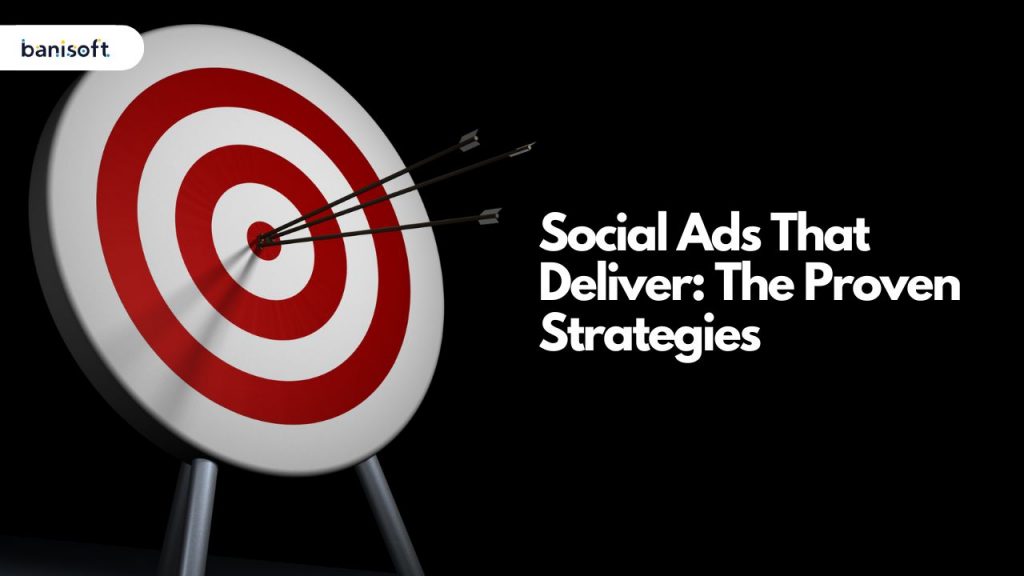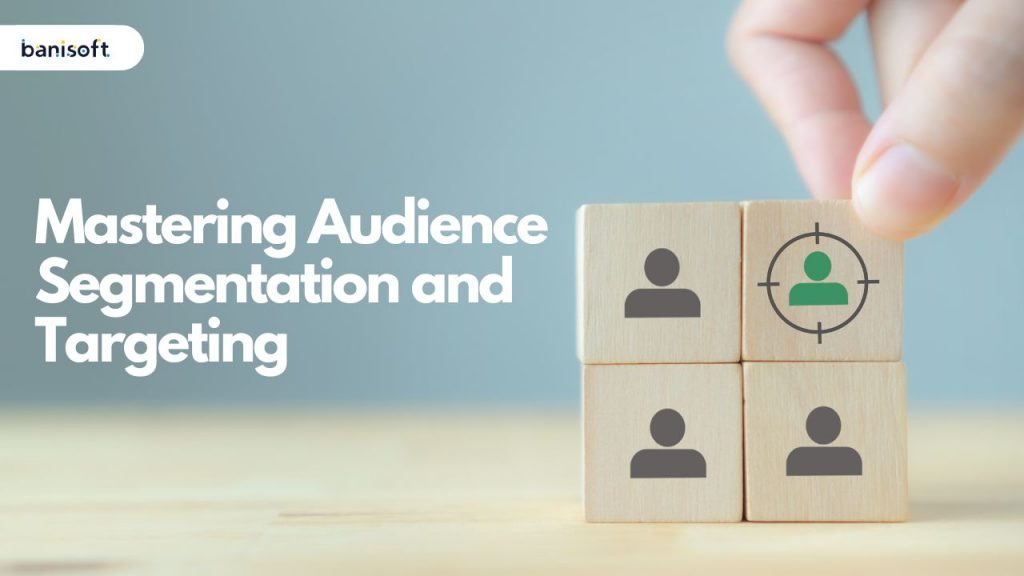Social Ads That Deliver: The Proven Strategies

As a seasoned marketer, you already know the fundamentals of social ads – targeting the right audience, crafting compelling copy, optimizing for performance!!!
But in an ever-changing landscape dominated by algorithm updates and shifting user behaviors, true success demands more than just a solid foundation!
It requires you to constantly look for new and better ways to do things, a willingness to experiment, and an eye for the opportunities that others miss.
In the following blog post, we’ll leave the basics behind and dive headfirst into the cutting-edge strategies and tactics that can propel your paid social campaigns to new heights.
From leveraging advanced analytics to capitalizing on emerging trends, we’ll explore the techniques that will keep you ahead of the curve and your competition scrambling to keep up.
If you’re ready to take your paid social game to the next level, you’re in the right place. Let’s get started!
Mastering Audience Segmentation and Targeting

Micro-targeting
- Psychographic targeting: Instead of just targeting based on age and location, think about the attitudes, values, and lifestyles of your ideal customer.
For example, if you’re selling eco-friendly cleaning products, you might target people who have shown an interest in sustainability and environmental issues.
- Behavioral targeting: Look at what actions people have taken online, like browsing history, purchases, and engagement. If someone has been looking at hiking boots on several websites, it’s a good bet they’re in the market for outdoor gear.
- Custom audiences: Most platforms let you upload lists of contacts or website visitors to target with ads. This is super powerful for things like targeting people who have abandoned their shopping carts or lapsed customers.
Dynamic Creative Optimization (DCO)
- AI-powered personalization: Tools like Facebook’s DCO or Google’s Responsive Display Ads use machine learning to mix and match different ad elements (headlines, images, CTAs, etc.) to see what performs best with different audiences. It’s like running dozens of mini-tests automatically.
- Real-time optimization: As data comes in, the AI shifts budget to the top-performing ad variations. It’s constantly learning and refining for optimal results.
Sequential Retargeting
- The customer journey: Instead of just retargeting everyone with the same ad, think about where people are in their journey to buying from you. Someone who visited your site might get a different ad than someone who put something in their cart but didn’t check out.
- Storytelling series: Break your message into a series of ads that tell a story or build on each other. For example: intro to your brand, feature highlight, social proof, special offer, etc.
- Frequency capping: Don’t bombard people with the same ad over and over. Cap the number of times someone sees an ad in the sequence to avoid annoying them.
How Automation and AI Can Make Digital Marketing Easier and More Effective

As marketers, we always want to get the best results from our online efforts while saving time and energy.
Luckily, automation and AI are changing how we do digital marketing. With smart bidding, predictive analytics, and AI-powered chatbots, we can work more efficiently and get amazing results.
Smart Bidding: Get the Most from Your Budget
Remember when you had to manually change your ad bids based on guesses or lots of data analysis?
Those days are over. Smart bidding uses automated algorithms to optimize your ads for your specific goals.
Let’s say you’re launching a new product and want as many sales as possible.
With smart bidding, you set your goal to “Maximize Conversions”, and the algorithm automatically changes your bids to reach that goal.
It’s like having a team of bid experts always working to get you the best return on investment.
The best part? Smart bidding has strategies for different goals, like cost per acquisition, return on ad spend, or just getting lots of clicks.
The more data you give the algorithm, the better it gets, so your results keep improving.
Predictive Analytics: See What’s Coming
We’ve all spent hours looking at campaign reports, trying to figure out what worked and how to do better next time.
But what if you could see how your future campaigns will do? That’s what predictive analytics does. It uses data and trends to forecast how your campaigns will perform.
Let’s say you’re planning holiday ads and want to know what will work best.
Predictive analytics looks at last year’s holiday data, current trends, and more to tell you which ads will do best.
You can then optimize your campaigns before they start, so you’ll do great.
AI Chatbots: Give Customers What They Want
Today’s customers want fast answers, personal help, and a smooth experience.
But as you grow, you can’t do this manually. AI chatbots are the answer. They’re like a team of support agents always ready to help.
Chatbots aren’t just for support. They’re a great marketing tool. You can use them to give personalized experiences that drive results.
For example, you can have chatbots offer a discount to people who left items in their cart, or target ads based on what people are interested in.
Automation and AI are here now. If you start using them, you’ll get the benefits – better ROI, helpful data, and great customer experiences.
Change can be scary, but these tools are meant to help you, not replace you. If you know your goals, audience, and problems, you can use these tools to work smarter and get amazing results.
Stay Ahead in Advertising: A Guide to New Trends

The world of online ads is always changing.
To stay ahead, you need to use the latest platforms and formats today. As people change how they use the internet and new tech emerges, advertisers must adapt quickly.
This section will explore three new trends – short-form video ads, augmented reality (AR) ads, and livestream shopping – and show you how to use them to stay ahead.
Short-Form Video Ads: The Power of Brevity
In the online age, short and sweet is key.
The huge growth of sites like TikTok, Instagram Reels, and YouTube Shorts shows that short-form video works.
But what makes these ads so effective, and how can you use them for your brand?
Short-form video ads work because they are short, creative, and relevant.
You have just seconds to make an impact, so every second counts. By using catchy visuals, music, and a clear message, these ads can grab attention and stick in viewers’ minds.
The numbers back this up.
Short-form video ads increase brand awareness by 20% and make people 17% more likely to buy compared to static ads. And with people spending over an hour a day on these sites, you can reach a lot of people.
So, how can you use short-form video ads? Here are a few tips:
- Keep it short: You have a small window of attention, so keep your ads 15 seconds or less.
- Be visual: Use bright colors, bold graphics, and good visuals to stand out.
- Get creative: Use humor, music, and trends to make your ads memorable.
- Know your platform: Make content that fits each site’s unique audience and style.
Augmented Reality Ads: The Future of Immersive Ads
While short-form video is about being brief, AR ads are about creating an experience that pulls viewers in.
By adding digital info and graphics to the real world, AR ads engage viewers in a way regular ads can’t. But what’s next for AR ads, and how can you use them?
Imagine an ad that comes to life with a tap on your phone.
A clothing brand lets you virtually try on outfits.
A furniture store lets you see how a sofa would look in your home. A beauty brand lets you try makeup without actually applying it. This is the power of AR – to blur the lines between the real and digital worlds and create unforgettable experiences.
And the best part? AR ads are now possible.
With phones and sites like Facebook and Snapchat offering AR ads, the tech is available to all advertisers.
And AR ads work, with higher engagement, longer views, and better brand memory compared to regular digital ads.
So, how can you start with AR ads? Here are a few steps:
- Know your goals: What do you want to achieve? Do you want to showcase products, offer virtual try-on, or create a memorable experience?
- Choose your platform: Pick the site that best fits your audience and goals.
- Keep it simple: Don’t feel you need to create a complex experience. Simple interactions can be powerful.
- Track and improve: Monitor your AR ads and be ready to make changes based on what works and what doesn’t.
Livestream Shopping: Where Social Commerce Meets Interactive Ads
In the age of social commerce, the lines between ads, shopping, and entertainment are blurring. Nowhere is this clearer than in the rise of livestream shopping.
By offering a live, interactive shopping experience, live streams are changing how people find and buy products. But what is livestream shopping, and how can advertisers use it?
At its core, livestream shopping combines the urgency of live TV with the interactivity of social media.
Brands and creators broadcast live video of products, with viewers able to buy in real-time via links or buttons in the stream.
This creates a sense of urgency and community, with viewers competing for limited-time deals and chatting with hosts in real-time.
And livestream shopping works, driving conversion rates 10x higher than regular online shopping.
But livestream shopping is more than just a sales channel – it’s an ad opportunity.
By adding shoppable ads to livestreams, brands can offer a seamless path to purchase and drive action in the moment.
And with sites like Facebook and Instagram offering livestream ads, the time is right for advertisers.
So, how can you start with livestream shopping ads? Here are a few tips:
- Know your platform: From Amazon Live to YouTube Live to dedicated livestream shopping sites, there are many options. Pick the one that best fits your audience and goals.
- Partner with creators: Working with influencers can help you tap into existing audiences and offer authentic product showcases.
- Keep it engaging: Interactivity is key to livestream shopping. Get viewers involved via chat, Q&A, and limited-time offers.
- Optimize for mobile: Most livestream viewing happens on mobile, so ensure your ads and shopping experience work well on mobile.
Optimizing for Full-Funnel Results

In the complex world of digital marketing, it’s essential to look beyond immediate wins and focus on long-term, sustainable success.
Here’s how to optimize your paid social strategy for full-funnel results:
- Cross-Channel Attribution: Gone are the days of giving all the credit to the last click. Today’s customer journey involves multiple touchpoints across various channels.
Implement advanced attribution models to accurately track and understand the impact of each interaction, from the first impression to the final conversion.
This knowledge will empower you to allocate your budget more effectively and optimize your campaigns for maximum ROI.
- Customer Lifetime Value (CLTV) Optimization: Don’t just chase quick conversions.
Shift your focus towards building lasting relationships with your customers.
By prioritizing CLTV optimization, you’ll identify high-value segments, nurture leads through personalized experiences, and foster loyalty that drives repeat purchases and long-term profitability.
- Brand Building through Paid Social: Paid social isn’t just about driving immediate sales. It’s a powerful tool for shaping brand perception and fostering emotional connections with your audience.
Utilize paid social channels strategically to tell your brand story, showcase your values, and cultivate a loyal community of advocates.
By learning a full-funnel approach to paid social, you can build a sustainable marketing strategy that drives both short-term wins and long-term growth for your business.
Final Words
By adopting the advanced strategies and tactics outlined in this guide, you have the power to elevate your paid social campaigns to new heights.
Remember, it’s not just about mastering the tools and techniques, but also about fostering a mindset of continuous learning and experimentation.
Feel free to share your insights or connect with us for further discussions on advanced paid social strategies.
Together, let’s unlock the full potential of paid social and drive remarkable results for your business.
Social Ads That Deliver: The Proven Strategies Read More »







